IMDB facts: 1 hour and 20 minutes, rated 5.9/10 from 1417 raters.
A band of four orbit Mars and head for home but the Aussie on the controls is on the wrong side of the road and they fly into the future by more than five hundred years. That is high octane.
They land on a future Earth and set about recreating the society they left behind. They encounter the giant rubber spiders that the fraternity brothers lost.
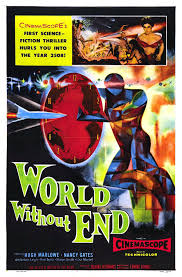 There are no scenes in the movie like that portrayed here. Yes, another misleading lobby card.
There are no scenes in the movie like that portrayed here. Yes, another misleading lobby card.
After some trudging through Bronson Canyon they find the Mole people who are hospitable, and whose society is harmonious, self-sufficient, stable, and dying out for a lack of manly vigor. Note the bronzed Aussie above who cannot keep his shirt on. By the way, he liked time travel so much he did again a year later in ‘The Time Machine.’ Once they get the travel itch, it itches.
The only salvation for the Moles is sunshine. See, very Strine. The leader of the pack is Hugh Marlowe of the pleasing baritone who urges the Moles to go topside and live in the sun. Vitamin D will overcome their endemic anaemia, says Dr Hugh. Stories about skin cancer are Commie disinformation plot to sap the vitality of the Moles.
But topside real estate is owned by mutants because this is a post-apocalyptic society after an atomic war that ‘no one wanted and no one could stop’ intones the Mole historian. There are many more mutants than Moles though the Moles have two eyes and this allows them to have better dress sense with their cloth helmets fitting like a cloche on the men.
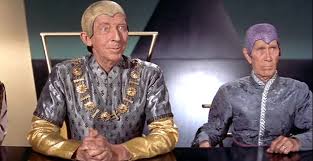 Note the headgear.
Note the headgear.
Mole damsels parade about in 1970’s mini-skirts designed by Alberto Vargas, always ahead of the times.
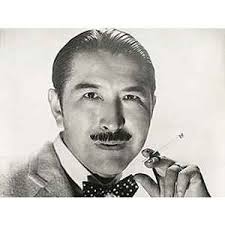 Al Vargas.
Al Vargas.
At the end Hugh has convinced the Moles to go out and fight the Mutants. Ah, war, glorious war. Among the last scenes is one of the pack instructing the now healthy young conscripts on locking and loading. Even the senior Moles, once top side, shed their headwear for sunburn.
In the Cold War context the Moles stand in for those Americans who pretend a normal life is possible and do not sweep under the bed every night for Commies and those soft Europeans who just want to live in peace after two world wars. Bah! What sissies!
In addition to their dress sense the Moles favour hard primary colours that show up best in Cinemascope. The top Mole is a kindly Ray Walston without the antenna, but there are others who mislike these strangers and plot against them. As usual, a scriptwriter is the cause of the strife and it is blamed on a woman.
One of the servants who cleans up after the men was born top side and she seems fetchingly normal, but nothing comes of this realisation. When a bazooka can be made, though how remains a mystery since the Moles have no metal, who needs words. Blast them! They blast them, and the survivors live for a while after, as humanity starts long term preparation for another Armageddon.
It may seem ironic today but none of that was intended at the time.
One oddity is that early on when the crew fails to respond to signals from Earth, we see the wife of one of them waiting with two children. She is worried and distressed. In the same room the press briefing comes to a close. And the journalists respect her privacy and let her leave the room unmolested. Fiction, indeed. Polite, considerate, tactful journos. In this respect the scriptwriter gets full marks for creative imagination.
Month: December 2017
‘Tobor the Great’ (1954)
It weighs in at 1 hour and 17 minutes of Dali time with a score of 5.2/10 from 476 of the demographic.
The schizophrenia in the production is indicated in the lobby card reproduced below.
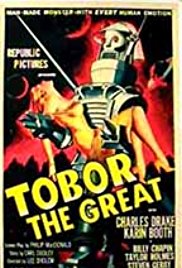 The usual misleading lobby card.
The usual misleading lobby card.
Is it a creature feature. the creature being the robot, or is a kiddie feature? The lobby card draws the creature fans, but the film is more for ages 7-12, making it perfect for the fraternity brothers. It features a precocious and tiresome boy know-it-all. At no time does the robot scoop up a babe. ‘Our client is innocent!’ declared the fraternity brothers from the sofa. There is far more brat than babe in slow moving ooze.
Mr Handsome is Charles Drake, one time sheriff of Sand Rock Arizona where ‘It Came from Outer Space’ in 1953. He must have moved on and gone to grad school in the intervening year to become a scientist in this gig.
It has a thick Cold War patina because ‘the enemy’ is out to get Tobor. The party chiefs have ruled and they must be obeyed or else, exile to New Jersey!
‘Tobor’ is, yes, bright eyes, ‘Robot’ spelled backwards. Toby is a bot but the gossip on the street-web is that someone made a stencil to spell R o b o t for a title card but sprayed it wrong way around and there was no budget, not even in those expansive Ike years, to do it again and so Tobor was christened. There is an explanation of the name in the film, nor of the sobriquet ‘the Great’ except that Robot is mighty big.
The Prof and Sheriff Drake want Tobor to ride rocket into space rather than human monkeys because of the dangers, and the unfunded pension plans. Hmm, that makes sense. Two problems that no one notices: Tobor is a giant at 9 feet tall and weighs as much as a four sumo wrestlers. He will not fit into a rocket capsule! He barely fits into Rhode Island.
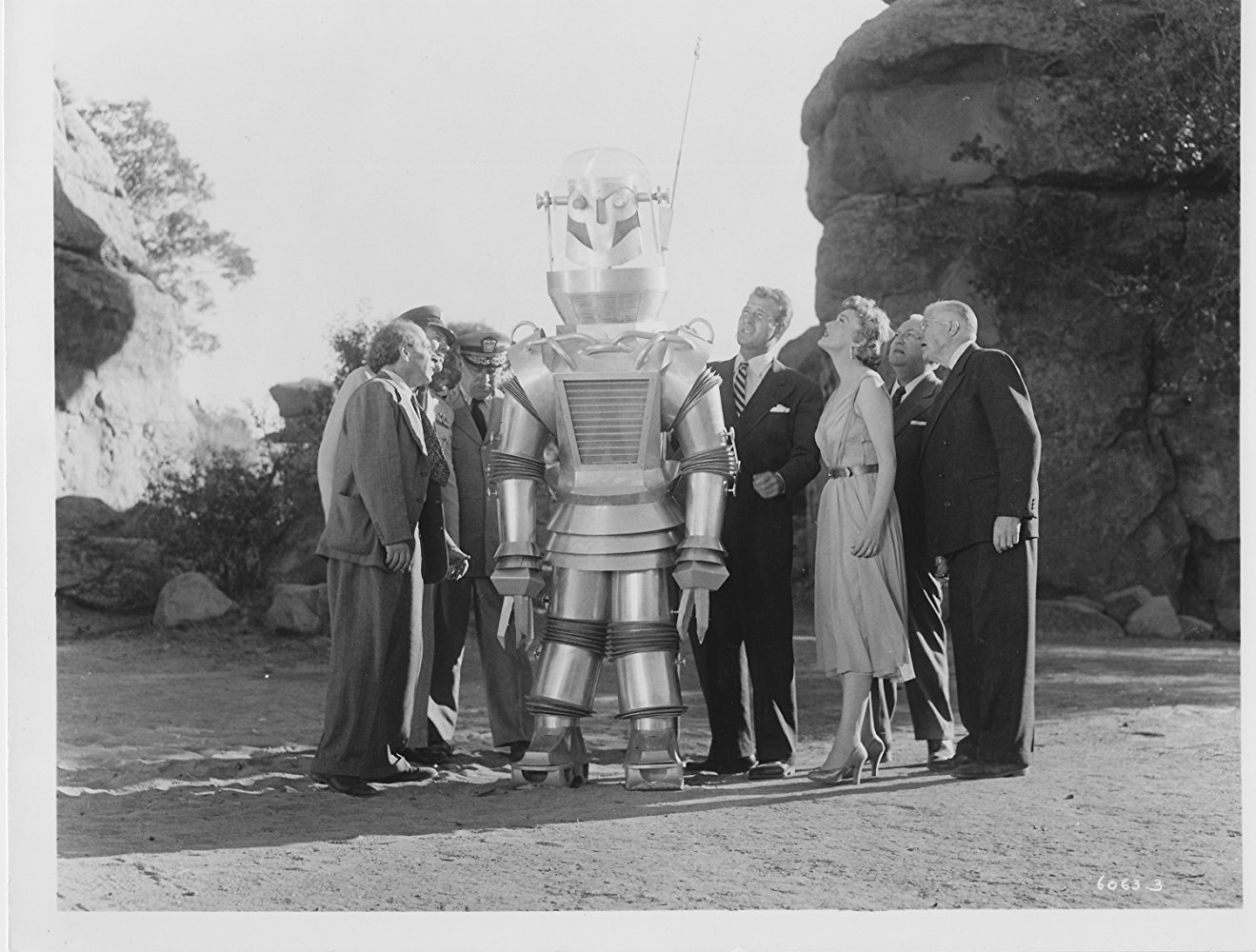 Tobor the Big
Tobor the Big
In addition, the Prof has endowed Tobor with emotions be inserting a sponge in his brain box. Hmm, just the thing for space flight, a moody, home-sick, lonely scrap heap.
Just to ensure things go wrong, the Prof has also called a press conference proudly to demonstrate his bot. He might have done this to embarrass the rocket men into using Toby and not more pilots but then he asks the journalists to keep Toby secret. Sure. Tell the press all and then say, pretty please, do not use it. They broadcast all details immediately to make the job of THE ENEMY easier.
The brat plays with Toby, while the adults are Einstein-napping, and nearly destroys the house. The adults declare the brat to be a genius. Hands up all parents who would react that way. ….. Thought so.
The Enemy is led by Istvan Gyergyay better known, if known at all, as Steven Geray. Like Drake, Geray did much duty in B Land with that accent he made a perfect Commie in more than one feature, with or without a creature. He was born in the Ukraine to Magyar parents when the Hapsburgs held sway
Mr Pomfritt is there, as a journalist, before he went into teaching Dobie, who blabs all. He is a B Sy Fy stalwart. But he went straight after his malfeasance in ‘The Man from Planet X’ (1951).
‘Plan 9 from Outer Space’ (1959)
Running time 1 hour and 19 minutes of Dali time, rated at 4.0/10 from 31,671 time wasters.
Conceived, written, directed, produced, and loved by Ed Wood, Jr. Because it is excruciatingly bad, it has attracted a following as witnessed by the extraordinary number of votes on the IMDb. This for a movie without a theatrical release.
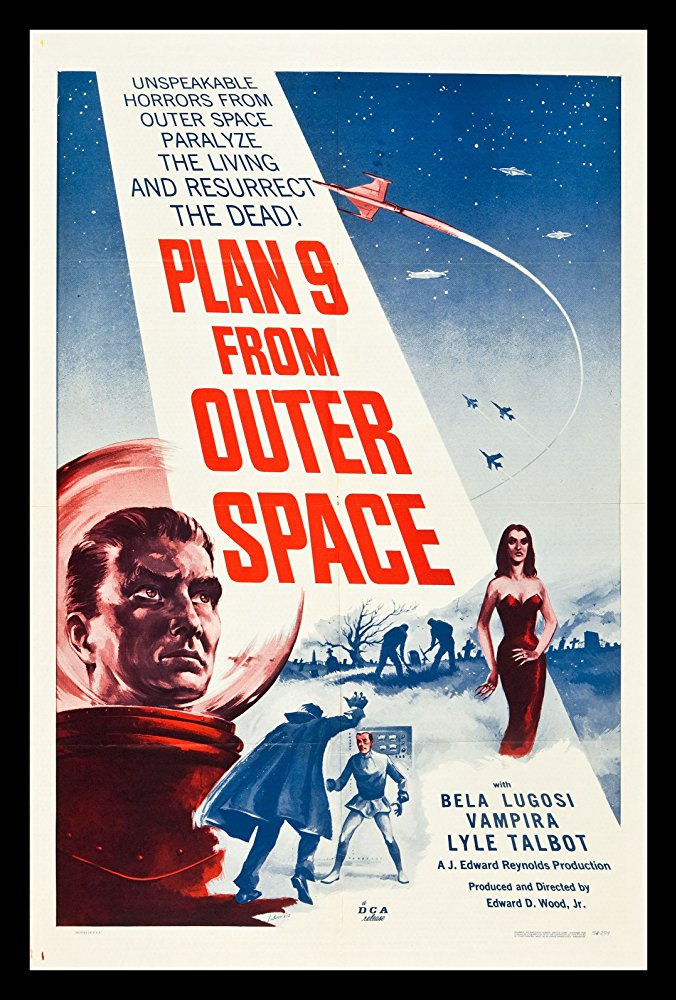 DVD cover.
DVD cover.
Leaving that reputation aside for the moment, here is the set-up. The aliens have tried eight times to communicate with Earthlings. Each attempt has failed. Even when contact is established Earthings simply deny the reality of flying saucers and aliens despite the evidence in front of their eyes. Hmm. That has a contemporary ring. Climate change deniers, anti-vaxxers, Tony Abbotts, unite!
Using non-Aristotelean logic, the aliens give up on living humans and decide to raise the dead (using John 11:38-44 as a manual) and work with them! Work with them? Yes, to destroy the Earth! Egads, why? Because Earthlings are violent, destructive, hostile, and aggressive.
The aliens declare that the Earthlings will not be satisfied with blowing each other up but as technology develops they will start blowing up other worlds. Does that sound like GOP foreign policy? I could not possibly say. That aliens have come to stop Earthlings from destroying the Earth, the solar system, the galaxy, or the universe is a theme in Sy Fy. Wonder why?
Since Earthlings will not negotiate, it is time for the final solution: Plan 9. Vampires provide the creatures for this feature in the dark and misty graveyard where much of the film is set. Though some scenes switch, inexplicably, between day and night and back. Is this post-modernism at work, refusing to privilege continuity!
The flying saucer makes little effort to conceal itself relying for concealment on the delusions that explain the Republican Party today.
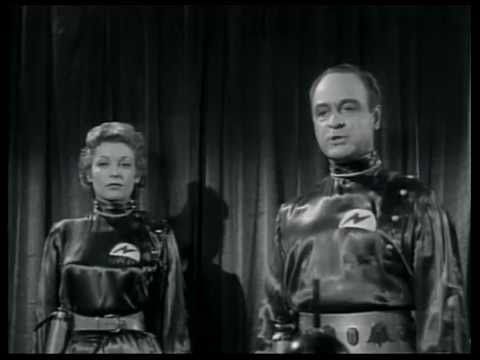 First they iron the shirts and then shine them.
First they iron the shirts and then shine them.
These technologically superior aliens in shiny sateen rigs are defeated by a couple of muscle men who are violent, destructive, hostile, and aggressive, in other words, typical Earthlings. That’ll show ‘em to call us names!
But it ends on a note of caution that they, the aliens, will be back and we have to be ready for them. What does that mean, ready? When they say Earthlings know nothing but violence, just blast them. That works. We’re already NRA-ready!
The production is amateurish. The cardboard walls shake when someone touches them. The flying saucer is sometimes called a cigar (and later it is lit) but it is always shown as what it was, a spinning top. The acting is painful to watch as the players struggle to remember their lines and deliver then slowly with no inflection. The sets are empty, e.g., the cockpit of the passenger aircraft shown twice is two folding chairs, confirming some perceptions of American Airlines.
There are voiceovers that are mawkish and confusing. It is introduced and concluded by a reincarnation of Charles Fort, the favourite author of the fraternity brothers.
Of the cast only Gregory Walcott seems to have had a film career, mostly in television, especially westerns when they were the fashion.
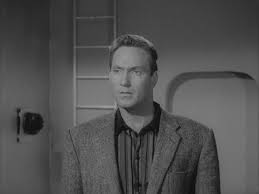 Gregory Walcott
Gregory Walcott
Perhaps his North Carolina accent made producers think he was from the west. West, south, there is no difference when viewed from Hollywood.
The gossip on the web is that Ed Wood started this project as a biography of Bela Lugosi, who figures in about two minutes of the film, and then Lugosi died. Had he seen the rushes? Nothing stopped Ed Wood. He hired his wife’s doctor to stand-in for Lugosi hiding behind the cloak held to his face.
 Is there a doctor in the cape? Yes.
Is there a doctor in the cape? Yes.
That the good doctor was a foot taller than Lugosi with a different colour of hair was ignored. For all of this and more see ‘Ed Wood’ (1994), a biopic
‘The Killings at Outpost Zeta’ (1980)
It runs 1 hour and 32 minutes of Dali time, scored 4.4/10 from 212 friends and relatives of the producer on the IMDB.
Outpost Zeta is a crucial toehold in a vital part of the galaxy. OK. The original garrison went off the air. A rescue mission went in, and it, too, went silent. Then a second. Still nothing. Gulp! Whatever is going on at Zeta, it is not good.
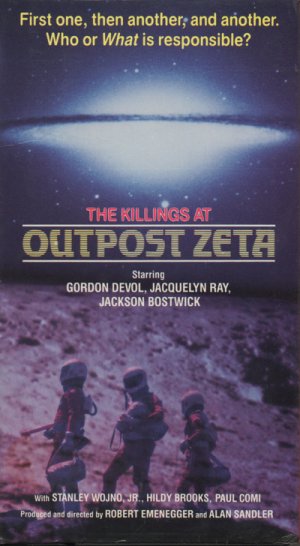 DVD cover.
DVD cover.
A third rescue team of volunteers is assembled, who then dutifully make last wills and testaments. That is a sobering beginning to this low budget creature feature. They are five in number or is it six. They are slain one by one. No wonder, to defend themselves from the unknown and unseen menace they have caulking guns! Still less do they wear any body armour or space suits. The tip jar did not run to such accoutrements but the local hardware store had caulking guns on special.
When arriving at Zeta, they find a space buoy with a message from one of the benighted rescue teams warning them off. Needless to say, this warning is disregarded and they land.
Mercifully we get no backstory for these volunteers. One pales to think what this screen writer would have done with that. Mawkish, adolescent, trite, these are the words the come to mind. Yet none of them strikes this viewer as the volunteering type, pursed lips or not. They are too young to be fatalistic. They are so unlined and unwrinkled, do they have the experience and cool heads to survive where others have, evidently, not.
The squeamish medical doctor is a woman and there is not one demeaning, derogatory, or sexist remark from the Sensitive New Age Soon-to-be-Dead Men. There is also a woman scientist who squawks about the hindrance of security. Yes, one would belittle security after eighteen mysterious deaths. Sure. She is the first to go, and ‘Good riddance!’ shouted the fraternity brothers.
The team does show interest in this strange and alien world. This fact is worth noting because in many B Sy Fy entries the explorers of new worlds show no interest in the new world. These six do. There are a couple of other things to like mentioned below.
The acting is pursed lips, furrowed brows, open-mouthed stares, and many blank looks. The directing is leaden. The production values are homemade. We get a few creature’s eye view that lets the air out of the mystery too early. There is also much heavy breathing. Much.
But the surface of Zeta is eerie and forbidding with an orange filter on the lens and I got to like their red jumps suits and visored white crash helmets. I liked the landscape because it did look strange, unlike so many of these Z movies where the alien world is the producer’s backyard, and looks it. I liked the visored helmets because they were used, not opened for close-ups. It put distance between the viewer and the players with some verisimilitude. Contrast this latter point to ‘Arrival’ (2016) where the safety mask is removed almost immediately for close-ups thereafter. Such is the ego of actors.
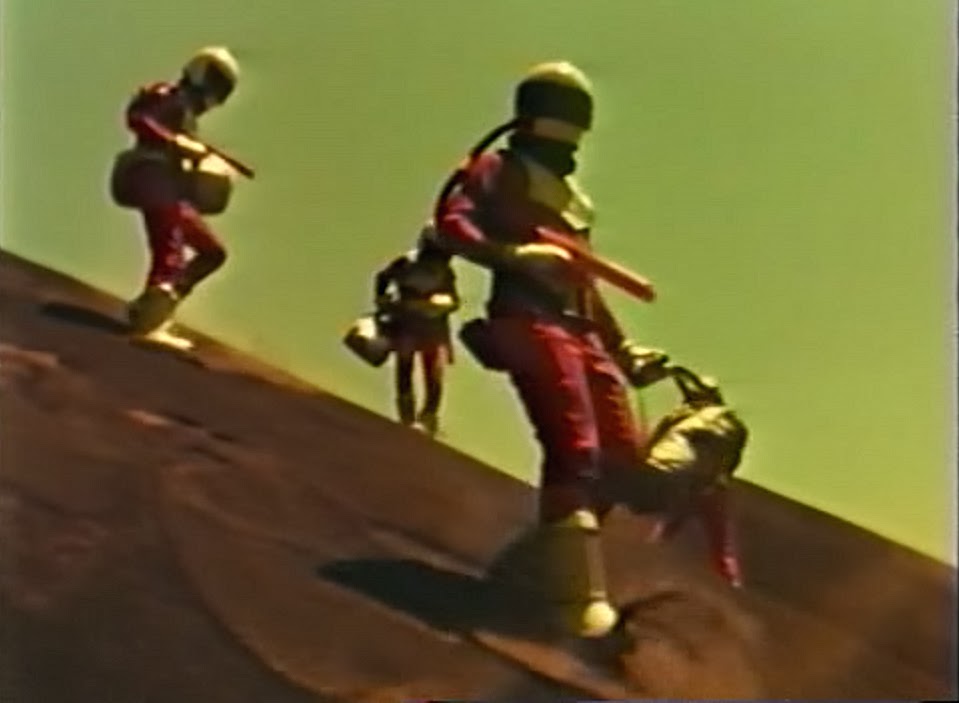 The fashion on Zeta
The fashion on Zeta
Moreover, I liked the creature, some moving hot rocks. Why like murderous hot rocks? Because they are the descendants, surely, of the Horta from ‘The Devil in the Dark’ of Star Trek the Original Series in series one in 1967.
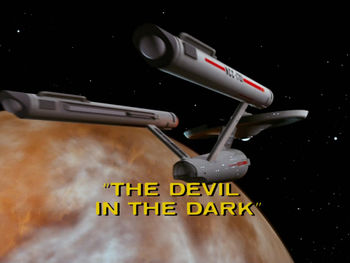
This film, however, lacks the mystery and the compassion of the Star Trek episode. It is played strictly as a hot-rock-creature feature, not an existential rumination on sentience, consciousness, communication, and compassion.
No surprise to see that none of those associated with this film have substantial CVs on the IMDb.
‘Creature with the Atomic Brain’ (1955)
One hour and 9 minutes of running time, scored 5.5/10 from 842 votes.
More a creature feature than Sy Fy, but from a story and screenplay by that Sy Fy journeyman Curt Siodmak and starring the future governor of Hawaii, Richard Denning(er). The director was Edward Cahn.
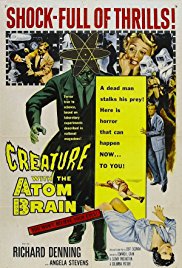
It has a grim opening with a figure walking, dead-eyed, down a darkened, tree-bowered residential street.
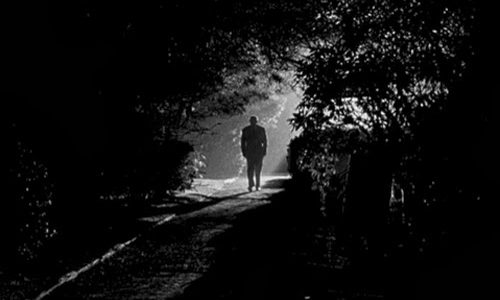
Nice. It gets off to a good start.
A gangster is murdered, then the DA, each time the murderer leaves behind finger prints galore. In case plod misses them, they glow in the dark! The police swing into action, aided by the Governor. Wait! The finger prints trace back in each case to a dead man!
Yes, there is mad scientist with plenty of Bunsen burners at work, implanting electrodes into the brains of recently dead men. Being a sexist he does not body snatch dead woman and give them equal employment opportunity as criminal zombies. He powers the electrodes with radium, hence the word ‘atomic’ in the title, but the creatures are multiple not singular. Since the scientist speaks with a German accent, IMDB reviewers assume he is a Nazi, but there is nothing in the film to support that interpretation apart from the accent. In fact, the actor is Gregory Gaye who was born in Russia and he faked the accent.
His research into brains, electrodes, radium, and espresso has been funded by Frank, a notorious villain who is out to wreak vengeance on criminal business rivals and lawmen. He is as merciless as Ming. In fact, the mad scientists wants to quit but… well, research grant KPIs are KPIs
We do not get to see the body snatching but do get a look at the lead-lined laboratory, lit by Bunsen burners, Bad Frank and Mad Scientist have to crawl through some (unexplained) plastic wrap. It was an unusual effect, but there no point to it, i.e., unless in 1955 plastic shields radium. They crawl through it once and we see it four times. In case we missed it the first three times.
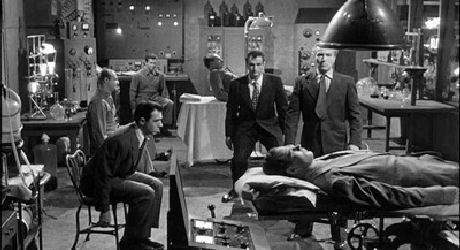 Inventory of the dead.
Inventory of the dead.
Denning goes around thinking, rather than kicking in doors, and is pleasant and polite, so different from current Hollywood Hop-Heads who yell, stomp, and sulk. He enjoys a normal home life with homemaker wife.
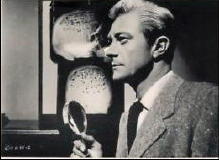 Denning thinking.
Denning thinking.
She is the Donna Reed stereotype of the time and place but perhaps it is more honest than those Sy Fy films of the period that include a lady scientist and then thereafter belittle her and limit her actions to serving coffee and treat her as an object fo the men to fight over.
There is also pathos when one of the avuncular police officers is murdered, and who yet in death helps to undo Big Bad Frank.
Speaking of the stereotypes of the time and place. The army and police are presented as responsive, competent, diligent, dutiful… Well, it is a work of fiction. Where are the lazy coffee drinkers, the petty martinets who will not move without a written presidential order, the oh-hummers who are bored by the end of the world, the corporate underminers? No, the forces of order are not always presented in that way in creature features of the time. In ‘Not of This Earth’ (1957) the local police are lazy, incompetent, heedless, and unresponsive. That seemed more likely to this jaded viewer.
Many zombie movies, and this is the sub-class for this one, made during the Cold War were thinly disguised references to communism. It is easy to see how that can work. Yet in this case I did not get that impression. There is no greater purpose in the film than a few twists and turns to entertain an audience.
Cahn turned out B features ten or more a year with titles like ‘It! Terror from Beyond Space’ (1958), ‘Zombies of Mora Tau’ (1957). ‘The She-Creature’ (1956), ‘Voodoo Woman’ (1957), ‘Dragstrip Girl’ (1957), ‘Invasion of the Saucer Men’ (1957), ‘Cures of the Faceless Man’ (1958), ‘Invisible Invaders’ (1959), and more. What a CV.
‘Target Earth’ (1954)
The facts from IMDB: 1 hour 15 minutes, 5.7/10 from 814.
The Russians are coming! But some citizens have slept through it. What an advertisement for Serta.
Backup. This is one of those Empty City/Earth movies. Where have all the (other) people gone? A few scattered individuals emerge to find…silence, more silence, and each other.
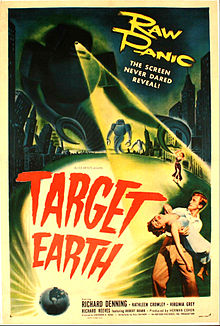
First they have to accept the situation: They are alone. Next they have to decide what happened? Where is everyone else? Third, what shall we do?
Tensions arise at every step.
One of the tropes is leadership. Will a leader emerge from this random assortment of individuals? If so, will there be rebellion. This premiss provides rich pickings for a screen writer.
It all goes pretty much according to formula, but if formulaic it is nonetheless creative. The opening scenes of the quiet cityscape at street level are arresting. The inserts of stock footage reinforces the abandoned look of this large city. (Chicago in the original story, but filmed in Lost Angeles. On that more later.) The beginning is very eerie and promises much.
The camera cuts to a Kathleen Crowley gradually awakening. There is no sound. None. She does not moan or groan. There is no street noise, yet it is hot, there is sheen of sweat on her, and the window is open to a slight breeze on the curtains. Silence. She fumbles around and gets dressed. We hear snaps, clicks, and snicks as she dresses, opens, and closes drawers and doors but nothing else. On the way out of the apartment building she knocks on a couple of doors to no reply. She meets no one but she seems inwardly preoccupied, as though late for a 360-degree review with a McKinsey-speaker. We notice the empty silence but she does not, quite. She hurries along the empty street and gradually realises this is not right. She comes across a dead woman lying on the street. ‘Gasp’ is the first sound. Definitely not right!
This silent opening was daring indeed, and given the attention-span deprived audiences today, no film maker would dare do it now. Everyone would reach for the iPhones in boredom to check-in on Facebook. Yet it offers mystery, tension, eerieness, the more so because the audience realises the silence before Crowley does.
Now she hurries on, we know not where, and the silence remains, until…. she turns a corner and runs into Richard Denning. Say his name with respect because he did not survive ‘The Creature from the Black Lagoon.’ Later Denning was the 5-O governor of Hawaii with an office in Iolani Palace. Some CV, gobbled up by the Creature from the Black Lagoon, but making a come back as governor, and in that palace.
She is fearful and Gov slaps here around to tell her he will not hurt her! This is 1950s man-logic. Smack! See, I won’t hurt you! Smack! (Remember Denning did not write it that way and enjoyed a reputation as a gentleman professional.) After she has been beaten into submission, they club together and head for mid-town on the assumption there will information, if not people, there. Along the way they establish that the telephones are out, and no one has a iPhone. There is no electricity for radios.
Then in silence they hear sounds and trace them to a bar where a couple are carousing, devil may care. Virginia Grey and Richard Reeves are the players both instantly recognised from countless supporting roles, but here getting a lot of camera time. She has chiseled cheek bones and he is a man-mountain. Now the team is four and clearly Governor Richard is in charge. Off they go, and find automobiles have been purposely disabled. By this time Gov has concluded that there have been an evacuation.
Having just got in from Detroit, travelling eighteen hours, he slept through it. Crowly was comatose from an OD of sleeping pills. Grey and Reeves were sleeping off an alcoholic stupor before starting the next one.
It must be W A R. Yet there is no rain of bombs or missiles, just empty streets. They find another corpse.
Then there appears another citizen, frazzled, clothing askew, like he just came from a frat party, who says he has run away from the invaders on the North (Korea) Side of town, where there is indeed destruction. He is hysterical, a duty usually consigned to a woman. Nice change.
While the characterisations have been changed from the original story the narrative so far is consistent with it.
Now it diverges. For while the five gabble, a shadow falls on a building. A giant shadow. They take cover. The shadow wobbles. Is this the Amazing Colossal Man on the loose again! or The Fifty Woman who got rid of Abbot and Costello (I wish). Mr Hysterical runs amok into the street and the Shadow, a tin man, zaps him with a Gort eye-ray. Poof! That is some hysteria cure! Oh oh.
They hide in a hotel on the assumption ‘they’ will not search all the rooms just yet, because this is an advance patrol moving in from the North. Bloody Canadians! The weather has finally driven them south, and this big thing, must be an armoured polar bear. What other explanation could there be, Erich? Although how this giant will enter and search a hotel is a question best left unasked.
The deviation from the story is showing the Big Tin Man. In the story the invaders are unseen. Given how clumsy and awkward Tin is, that might have been better. Tin is slightly more agile than Chani from ‘The Devil Girl from Mars’ who tripped over his own size twenty-two shoes. This robot is stunt man Jack Calvert who make robots a speciality. This outing must have been early on that career path before he perfected a technique.
 Enter Tin Tin
Enter Tin Tin
The second deviation is that about now we get cross cuts to a military operations room with lots of extras in mismatched uniforms from an Army Navy Store. They know nothing except that something has happened. Well that confirms the street cred. Solution? Bomb it!
Much stock footage of war planes taking off, retracting landing gear, assembling in formation, flying off in great numbers. They fly over the city observed by our team, and then they are blasted out of the sky in a sun burst. Not very well done but we got the idea. Kaboom! No more airplanes. That eye-ray is a killer.
The colonel at HQ is flummoxed. ‘Bomb’ was the only play in his playbook. By the way would a chicken colonel be in charge of bombing Chicago, Lost Angeles maybe, but ChiTown? As per usual there is no indication that there has been any effort to communicate or negotiate with the invaders, say, by offering them Mexico, Russ Limbaugh, or Paris Hilton.
Despite radar, telephones, underlings, fruit salad, and pips, the colonel knows nothing about the invaders. On the street, we know they are tin men. Well there is only one Tin Man, but that is enough with that eye death-ray. (In high school there was a rumour that Mrs Picks who taught Latin had a death-ray called the ablative case. No one every dared test the myth. Or if they did, poof, there was no report.)
The happy campers four do not offer the screen writer enough tension so he added a psychopathic killer to the mix. He has a gun, of course, and is addled. He is also a relative of the moneybags who invested in this celluloid, and so he is a must. His inexplicable behaviour leads to the final confrontation with Tin, and it is a good thing they found can opener in time.
The invaders are technologically superior because they got there, though Canada is not that far away, are brought low by merciless Yankee ingenuity, whereby they play Bing Cosby singing ‘White Christmas’ repeatedly and this cracks the robots eye, and the cyclopes go down, down, down. Who would not? Hard as it is to believe, bombing is not enough. By the way, the ever reliable Whit Bissell came up with sound effect. Well done, Whit.
The survivors begin stockpiling more Der Bingle records because THEY will be back. These inhuman invaders were Russians in tin cans, right? Only team work and w(h)it can defeat them. Oh, and Der Bingle.
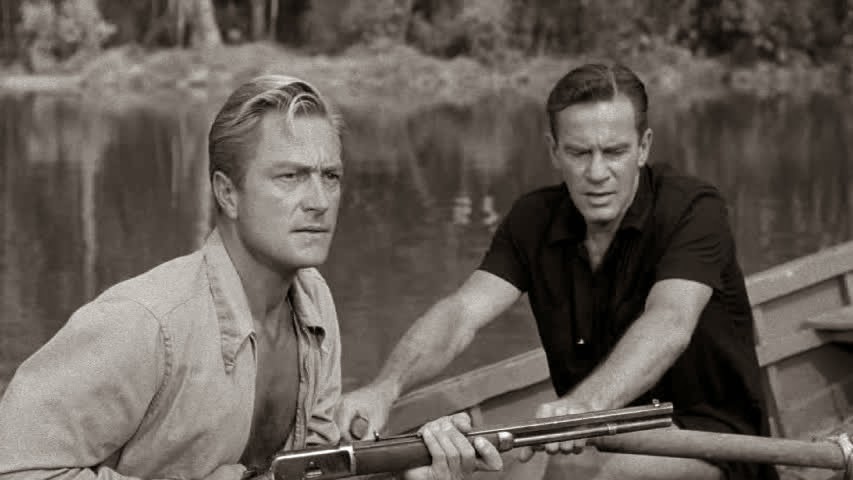 Richards Denning and Carlson hunt the Creature from the Black Lagoon.
Richards Denning and Carlson hunt the Creature from the Black Lagoon.
Denning did an MBA and went into business which he found a bore and he dabbled in amateur theatrics where he was encouraged to enter a radio contest, which he did and won. The sponsor of the contest gave him a screen test but rejected him because he looked too much like an actor already under contract. But by now Denning wanted to escape spreadsheets and pitched himself to Paramount and was born his B-movie career, for despite his good looks, easy manner, and professionalism he never ascended the heights, but he always had work and retired early to Maui, showing his good sense.
He was lured out of retirement for 5-O on condition that (1) he never had to leave Hawaii and (2) that he would not be required for every episode. That was agreed. (The rumour is that when Jack ‘Look at that Hair’ Lord quit 5-O he chose to stay on Maui, too. In our visits to Maul we have been unable to confirm this story. The search goes on.) Knowing Denning’s commitment to Hawaii caused his star to rise further in my cosmology.
The cynics think that the advertising department demanded that the Tin one be inserted into the movie to appeal to the creature feature market. Tin certainly does not add to the action, since he is largely immobile. Nor is the death ray all that exciting. More like a blurred screen that a mighty, crackling zap. Maybe he needed lessons from Gort.
The empty city is in fact Lost Angeles. This tip jar budget did not run to securing a police license with accompanying fee to film on the city streets, so it was done on the QT with a skeleton crew in a van going here and there in the very early morning. The film was then edited to remove any environmental sound and cut out passers-by. It is well done and the more intriguing for knowing how it was done.
‘The Bamboo Saucer’ (1968)
1 hour and 43 minutes, 5.6/10 from 274 ballots.
A throwback from the 1950s. Word on the internet street is that it was made in 1966 and shelved. That part is easy to see why. Yet it could not have been made during the coldest part of the Cold War for reasons made clear below.
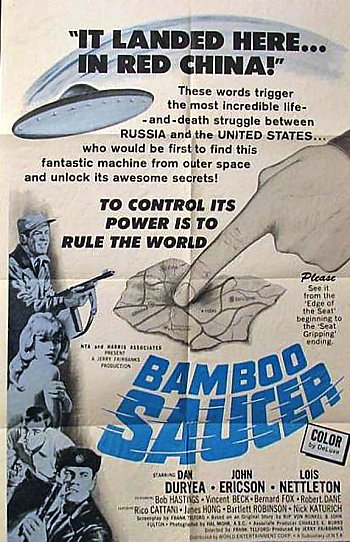
Here’s the deal. Eric the Fly Boy reports seeing a cobalt blue flying saucer during an X-plane test flight. Oh oh. That gets him grounded as a nutcase. We saw it, too, and know Eric is solid.
He becomes obsessed with vindication. Then he gets called to D.C. where he meets Dan who considers Eric an expert on flying saucers. DC Dan is a big wheel and telephones with demands hither and thither to throw his weight around. Fly Boy Eric is impressed and signs on.
Signs on to what? Well he did forget to ask, but DC Dan tells him anyway. There is a flying saucer sitting in Red China and we are going to get it before Mao realises it is there and gets his chopsticks on the iPhone within. Mao doesn’t know? No, it is in a remote part of China. We are later shown this with matte paintings of the Alabama Hills outside LA. Mountains equals remote. Got it.
Plus the saucer landed itself in a dilapidated, roofless Catholic Church, whether apse or naive is not specified. Since godless Commies do not go near churches the local authorities have not noticed it. The local peasants saw it land and saw two human figures emerge but keel over, die, and decay into dust. (Too long without coffee! What other explanation could there be, Erich?) The locals have passed the intel onto DC Dan because the peasants are oppressed by the regime and are plugged into the USA spy network even out there in the mountainous sticks. Got it.
DC Dan was 65 in 1968 and it is painful to watch him bail out of an airplane over remote China in the night, carry an empty back pack, and climb over papier-mâché boulders. When the action starts he moves like molasses. Sorry, Dan, but it is true.
DC Dan, Eric Fly Boy, and two tubby technicians are this A-Team. No sooner are they wandering about the Chinese Alabama Hills then they run into a Russian A-Team. There is much bluster and many threats but the script is clear, both teams are on the same mission, and neither wants to cross chopsticks with the Chinese. Anyway the Chinese are busy oppressing peasants. Got it.
This is the part that could not have been done in 1958. The American and Russians join forces to find the saucer, to fathom the saucer, and to evade the Chinese. No doubt each side will break the alliance when it is ready to do so. It sounds better than it played.
Another feature that would not have been done in 1958 is that DC Dan and the Big Russian are pretty much alike and DC Dan acknowledges this. The Enemy of Freedom and the Defender of Freedom are both bastards. Huh? No wonder it had no market for its message.
Lois Nettleton is a scientist with the Russians, and she gives Fly Boy a lecture on the equality of women in the workers’ paradise before the Big Russian slaps her down for not putting enough sugar in his tea.
DC Dan and his Russian alter ego are consumed by the mission, so Lois and Fly Boy pair off in the bushes. The other scientists reminiscence about pi derivations.
They elude routine Chinese army patrols. Due to budget cuts these conscripts have no eye glasses and don’t see much.
The Russo-Americo team finds the saucer. First problem is to get in. Much scratching and pounding. Meanwhile one of the scientist gets out his portable electric razor to tidy up, as you do on your first secret mission behind enemy lines, and ‘Voila!’ The saucer opens up to the gentle buzz. Being clean shaven got him into the saucer, if nothing else. Once in they have to fathom the gizmo.
Fly Boy grabs levers while the scientists deploy the slide rules they carried on the parachute drop.
The Chinese arrive in force and a shot-out results, but the near sighted Chinese cannot hit anything. DC Dan and the Big Russian stand back-to-back and blast about a hundred extras until the pile of Chinese bodies falls on them. Squash.
The time for slide rules ends. Fly Boy grabs another lever and off they go. Whoosh. They wobble around the Solar System for a while, until they encounter the de rigueur meteor, allowing Lois to scream. The fraternity brothers hoped it would end there, leaving us to wonder about the in-flight service, frequent saucer points, and toilet facilitates for humans. But no, there is a pompous coda.
Fly Boy and Lois clinch to affirm Americo-Russo friendship. They get control of the saucer and go back to Earth to land in Geneva of the Swiss where they will give the saucer to the world, which will lead to world peace. Why? Because those Saucerites will be back and we have to be united. Why? Maybe they came in peace looking for Klaatu. Are the Chinese invited?
The production is soap opera quality with many pauses as each actor reacts to a remark. The scenes related to the test flight are film school. Ditto Fly Boy’s sulking around afterward. The acting may not improve but there are fewer close-ups to remind the viewer later.
Video quality was excellent. After some Sy Fy movies seen lately, the saucer effects were neat.
This was DC Dan’s last film and he died before it was (finally) released. This Cornell graduate went into advertising and that brought him into contact with actors and on a bet he auditioned and got a part in a theatrical production. That was fun, and he did another. When a Broadway play he was in was to be filmed, he got the film part and went West, where he stayed. There seem to be hundreds of credits on the IMDb and he did everything. Some romantic leads in the 1940s, supporting actor, and sometimes villains in film and television, westerns, noirs, dramas, and even comedy.
A Double Creature Feature.
First, the undercard ‘Space Master X-7’ (1958), running 1 hour and 11 minutes, rated at 5.3 from 298 preferences.
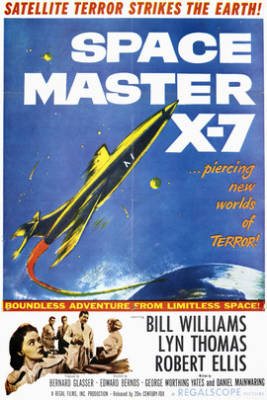 A lobby card that misleads audiences. Typical.
A lobby card that misleads audiences. Typical.
The Sy Fy aspects are few and quickly pass from the story. A rocket called, modestly, Space Master X-7’ returns its cargo of samples (from parts unspecified to my memory), which when spread around kill people. Morale. Do not spread space samples around. Ever wonder what that Moon rock in the National Cathedral in Washington D.C. is up to?
The sample becomes an enveloping and mortal fungus with the personality of a GOP senator. It destroys all without a backward glance. See, the comparison is apt. This fungus might have been a metaphor for Communism in a 1958 pix, made during the Cold War, but I did not detect any such innuendo. No, the sledge hammer script went at it literally, a fungus is a mushroom beyond the plate.
At a top security base in the remote desert Southwest a scientist, about whom more later, examines the sample, after much stock footage of rockets, parachutes, tin cans, and security blankets, uh, boxes. But people keep interrupting him, so he takes the sample home to work uninterrupted on it there.
Top security, right.
While poking the sample at home he has an argument with his ex-wife come a-calling. She goes away in anger and he keeps poking. Whoops. The fungus has had enough of that and it is goodbye scientist. Gulp. In truth, and very risqué for 1958, though the she and he had a child, they were, in fact, not man and wife. Gasp! In the morēs of the time that transgression allows a fate to befall the poking scientist.
By this time the slow-witted security officer at the base, played by Bill Williams, with his usual concussed look, comes to the house and seeing the fungus has had its way burns the house down. To avert a panic he puts about the story that the scientist died in the fire, and that they are looking for the woman seen there. In turn she thinks they suspect her of the fatal arson and takes evasive action. Bill wants to find her to stop the spread of the fungus but she knows nothing of this fungus, having not entered the home lab. This part is believable: she outwits the FBI, the USAF, and the police for an hour.
Per B-movie conventions they track down this interplanetary Typhoid Mary and that is that. The origins of the fungus, how to avoid it in the future, and such details are ignored.
Hardly Sy Fy.
There are only two interesting things about this overrated dross. Two of players are immediately recognisable. One is the scientist who is played by Paul Frees and many viewers, young or old, would twitch. He was a voice actor who did that work for two or more generations, much of it in animated movies until 1987 with ‘The Wind in the Willow.’ He also does the announcements at the train station in this picture, after the scientist is dead. He calls the timetable from the incinerator.
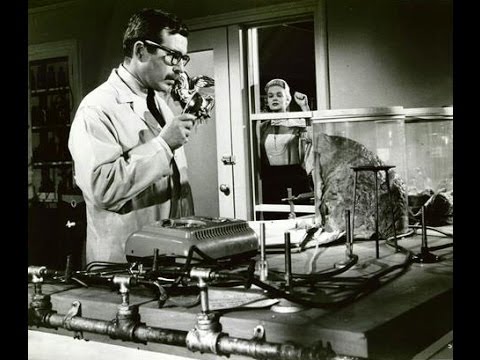 Frees in lab coat.
Frees in lab coat.
However, I remember that voice well from ‘The Milllionaire’ (1955-1960) where each week the heard but unseen John Beresford Tipton voiced by Frees handed over the dosh.
His Sy Fy credits as a voice actor are many and include ‘When Worlds Collide’ (1951), ‘The Thing’ (1951), ’War of the Worlds’ (1953), ‘Space Attack’ (1955), ‘Earth versus the Flying Saucers’ (1956), ‘The Twenty-Seventh Day’ (1957), ‘The Mysterians’ (1957), and ‘The Time Machine’ (1960). Like other voice actors his name seldom appeared in the credits but he always had work, unlike many credited actors.
The other notable player is Shemp Howard of The Three Execrables playing a straight part as a cab driver. Seeing him, the fraternity brothers waited eagerly for the pie in the face and were disappointed.
Now for the main event. the very superior ‘This Island Earth’ (1955), running 1 hour and 26 minutes with a 5.9/10 from 7413 opinionators on the IMDB.
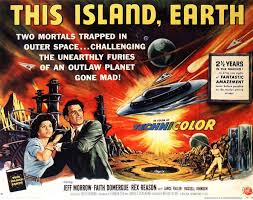
It stars Rex Reason’s chin as the Earth’s greatest scientist and test pilot. While flying his X-Plane it conks out, ever the peril with the low-bidder products, and a green aura surrounds the aircraft as it gently descends to Earth.
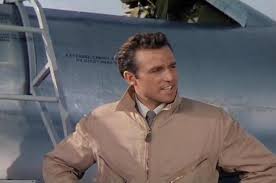 Chin and airplane.
Chin and airplane.
While Rex is used to the unusual in his charmed life this experience does give him brief pause. But only that. He goes to his top secret laboratory where strangers come and go at will. Next thing you know boxes and boxes of equipment arrive unordered, and with Allen Key in hand Rex and his obsequious assistant start putting together the Ikea television it becomes.
Once complete Siri turns herself on (down, fraternity brothers!). and there is Jeff Morrow with the strangest haircut congratulating Rex’s chin on winning the Nigerian Research Grant Lottery, first prize is an all-expenses paid trip to a secret locale where there is another laboratory. Who could rest that? Not that chin.
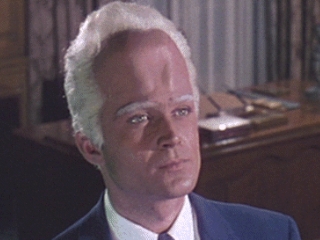 Check it out, and there are more like that at home!
Check it out, and there are more like that at home!
Spoiler coming.
Jeff and that white bouffant are from MetaLuna, well that is what it sounded like to me, which is losing a war because it is running low on nuclear energy. Being vastly superior beings they have sent Jeff via a nicely realised flying saucer to gather up scientists from all over the galaxy, though none of these other gatherees do we see, to synthesise nuclear energy on MetaLuna. Yeah, sure. Just add radium.
Jeff provided the green aura that saved Rex and his chin.
Among the scientist Jeff has gathered in his castle in the desert hideaway is Faith Dominguez. ‘Nice going, Jeff,’ shouted the fraternity brothers. While last year she and Rex did some skinny dipping when at a conference in Vermont (are there conferences in those woods?) she feigns not to recognise that chin. Since that is impossible he knows something is amiss but keeps it to himself.
The Professor from Gilligan’s Island is there, perhaps this explains how he got tenure on the islet, and with Faith he tells Rex that Jeff is not to be believed or trusted. Disbelief and distrust are now the order of the day.
While Jeff is Mr Congeniality, he has a mini-me with the same hair who is a white lab rat. Jeff reports to The Hall Monitor on an OLED Smart television and stalls for time while the scientists work, but the mini-me later tells The Hall Monitor that Jeff has gone native, watches baseball games, eyes off Faith, plays Monopoly, listens to Mozart, and has generally gone native and it not to be believed or trusted. Disbelief and distrust are now the order of the day.
This is the toxic atmosphere typical of most organisations, so Rex gets on with caring for his chin. When he cannot find a razor, he decides to escape with Faith and since the Professor seems an ever-present third wheel, him, too. Meanwhile, The Hall Monitor overrules Jeff and demands that he pack his scientists on the flying saucer and return home where they will keep working in a slave laboratory. Mini-me pursues Rex and company with lightening bolts. Zap! The Professor sacrifices himself for the man with the better chin, and a passerby is also zapped to show what lousy aim mini-me has. No wonder these superior beings are losing the war with gunners like that.
When Rex and Faith are flying away in a conveniently parked Piper Cub, they are John Deere tractor-beamed on board the flying saucer and whoosh…..
Jeff tells his sad tale as above. More whoosh.
Security may be a joke to the USAF but TSA full body scans are necessary to land on MetaLuna.
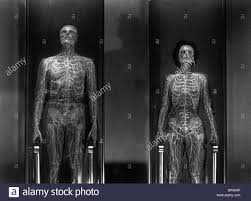
On MetaLuna the war is lost and Jeff defies high command and steals the saucer, evidently the only one left, to take Rex and Faith back to Earth. He does; he dies. They descend in the Piper Cub. Chin and Faith cuddle up in the Piper Cub, which hardly seems possible, with no further thought to the Meta-heads.
Meanwhile, the fatally wounded Jeff nobly crashes his saucer into the sea to be found later in other Sy Fy films.
The saucer effects are good, and the flight over the battle scared MetaLuna is effective, as is the shattered underground fortress, though the insect peons are there only for the creature feature advertising. Faith screams on cue. The pace is good. The sets are well designed and there are plenty of extras with that hair. It has the look of a A-picture. While Faith has Sy Fy credentials, the Chin does not, while Jeff has at least one other on his cv.
The gossip is that the original script played Jeff as a villain but the actor Jeff Morrow, who was well-known as opinionated, argued with the director, writer, producer, and busboy to make Jeff more human and rounded. He won and he was. This Jeff is a decent alien driven to extremes by circumstances beyond his control. He has indeed gone native, and was probably watching ‘I Love Lucy’ instead of beating the scientists into success with a slide-rule.
OK, but that does not explain the hair. Still less does it explain the fact that every other Meta-head we see on MetaLuna has the same hair under a clear plastic football helmet, except the Hall Monitor whose exalted status, apparently, frees his locks. Efforts to find a picture on Google Images failed. Suppressed!
The Hall Monitor has some pretty unkind remarks to make about Earth and Earthlings. He is a graduate of Kim Jong-un School of Intergalactic Diplomacy.
Faith Dominguez is there to scream and scream she does. She is not even permitted a lab coat! What a travesty of science.
Nor did I figure out any meaning from the title, on this the Nth viewing. I did not get any Cold War vibe from it.
‘War of the Satellites’ (1958)
IMDB rates if 5.1/10 from 441 casters. It runs 1 hour and 6 minutes.
Sputnik went beep-beep in October 1957 and overnight space flight became main stream, no longer for kids in ‘Space Patrol,’ ‘Rocky Rocket’, or ‘Flash Gordon.’ Independent film producer Roger Corman rushed to turn out the first post-Sputnik film in a deal with Allied Artists. This is the result.
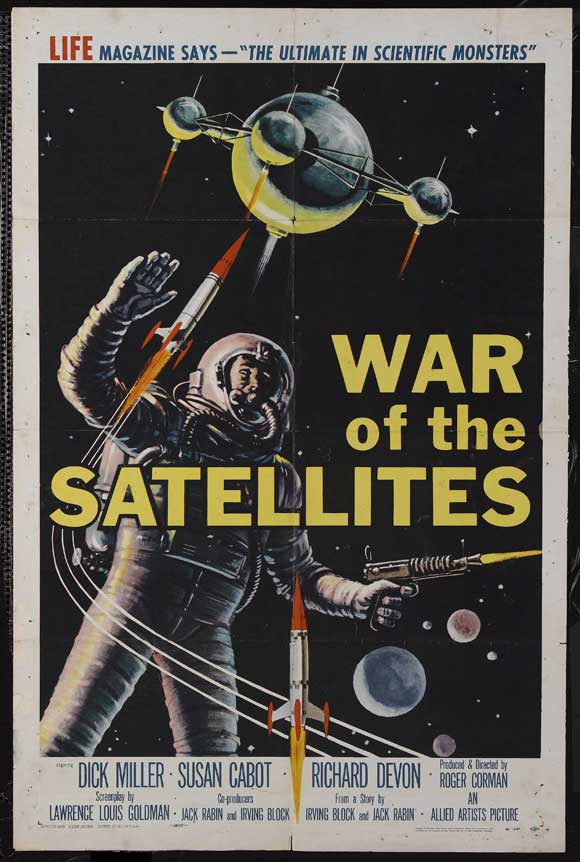 A Faux News poster. No one wears a spacesuit brandishing an NRA in the movie.
A Faux News poster. No one wears a spacesuit brandishing an NRA in the movie.
Here’s the set-up, a united Earth through the United Nations is launching satellites. While some delegates in the sparsely attended UN sessions are skeptical that the satellites will work, they are nonetheless party to the effort. The Cold War is only obliquely present when one character refers to ‘them’ who would like to see ‘us’ fail. It makes no sense in the context of UN but echoes the Cold War context.
Hey, the skeptics have a point. As the pix opens nine satellites — one after another — have already been launched and each has blown up as it reached the Mendoza line.
Note on terminology. Corman always does things his own way and he calls the space vehicles satellites, and he should know, but they look like small space stations, each with a crew of ten, and move through the void like chubby spaceships with porcupine antenna. Maybe the production was named and the design of the craft came later. In a Corman production there would be no money to re-do anything already done, like publicity material. And this was a rush job to get on the con trail of Sputnik and maybe that is the explanation. Sputnik was a satellite so this has to be a satellite no matter what it looked like or did.
Nine exploding satellites means ninety dead volunteers. The head of the mission is Pol van Ponder not even attending the requiems for his dead. (The fraternity brothers amused themselves with that name, especially later when he hit on the required woman in the crew.) Ponder ponders the situation and decides to press on, but wait…..
Meanwhile some teenagers doing an extra-credit anatomy lesson in a secluded parked car are disturbed by a bright light from the night sky. Wow! That brings things to a head. Then there is a flash and crash. Wacko! They find a small rocket that has just burned through the atmosphere but they pick it up and have a look. On it is an inscription in Latin. Latin! Latin?
Is this a premature July 4th Roman Candle? Is it a message from the Pope to these two teenagers to button up and go home!
After consulting Mr. Pomfritt off screen, the teens turn the rocket over to someone who passes it on to the UN scientists at the satellite project. An ancient Roman translates the message.
‘This is a warning! Do not attempt any more space flights. Your corrupt world will NOT be permitted to infest the Universe!’
Gulp! Corrupt? Did they foresee in 1958 the Twit in Chief of 2017?
Ah, but there is a twist here. Pol van Ponder rushes to the UN meeting where a response to the Latin message is being slowly composed in the ablative case. But, then there is that bright light in the night sky again. It goes all disco as a strobe light and blinds, let’s call him Van, Van who crashes his car which by Hollywood convention bursts into flames. No more Van. (Picky viewers note that we never quite know where we are, there are California plates on Van’s car, but the UN is in New York City, and the missile launches of the time were from Florida.)
Without Van there is no satellite program. End of story. Whoops, almost, but then at the Council Room, half empty as usual, Van appears, in tact. Not a tear in his tweeds. Amazing! Relief is general.
Spoiler alert. Stop here to save the best for a viewing.
The Latin-writing aliens have somehow both burned Van’s body to the ashes found in the incinerated car and fabricated an exact replica Van who now acts as Van with his memories and the same dour personality. There’s more.
As we quickly learn this New Van has a split personality.
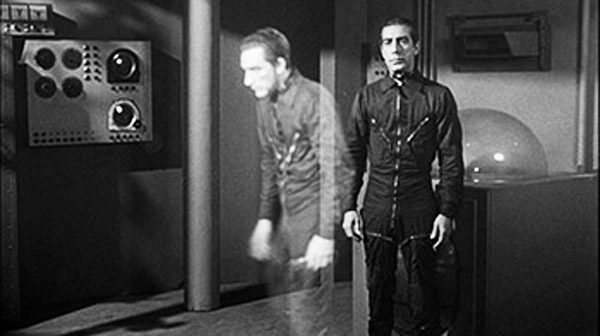 Van splits!
Van splits!
He can be two places at once! Imagine the advantages of that for KPIs. The scene where he splits into New Vans 1 and 2 is neat. It seems it is not something he can or need do a lot but he can do it when necessary.
The New Van is dedicated to scuppering the satellite program from within. What with Latin homework, the UN is about to give up anyway. Who wants to decline Latin conjugations. New Van sits back and waits for the inevitable defeat, but his pint-sized underling Dick goes to the meeting and makes a speech worthy of the Twit in Chief. Full of words. Good. Ones.
‘The very reason we have to go into space is to prove we can!’
With that great logic and his duck-tail haircut he wins over the delegates, who, as they think of their actors’ guild minimum paycheques, applaud his words. Listening on the radio, New Van is cranky about this turn of events and furrows his frontal lobes. Never good when an alien does that.
A tenth satellite is prepared and New Van volunteers to captain the crew, risking his own life. Remember the ninety space corpses already compiled. His plan is to botch the mission. He could do that by convening a 360 degree review or a SWOT analysis, but instead of McKinsey-Speak he prefers a more direct approach, a wrench in the reactor.
Now the title satellites are complicated affairs, as we now learn. Three rockets are launched, each with two stages. By the way, the ground control operator who shepherds them into the void is none other than Roger Corman. Once the three rockets rendezvous by the magic of wire and glue, they emit little dishes that join up to form the satellite, space station, ship. Too bad NASA did not go this route.
Picky viewers will note the same set is used both to the launch rockets and the satellite. Pedants will add that the previous nine satellites mean twenty-seven rockets have gone to the space junkyard orbiting the Earth. What was that about a polluting infestation anyway?
Now we have the satellite and New Van starts sabotaging it, but the crew keeps getting in the way. Moreover, tiny Dick spotted New Van, just before taking off, splitting in two. No one believes a haircut like that.
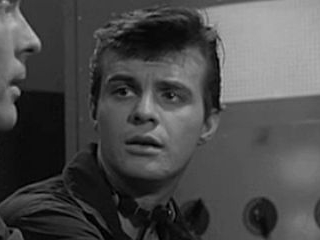
New Van continues putting sugar in the reactor. Another crewman also suspects New Van but he and Dick never do compare alien-spotting notes. Let’s call this other crewman Jerry, who confronts New Van.
 Jerry made his eyes pop off the screen, but it did not scare Van.
Jerry made his eyes pop off the screen, but it did not scare Van.
End of Jerry. He goes out the Memory Hole into space. More in the junkyard.
Then the doctor, prodded by Dick, examines New Van. Oh oh.
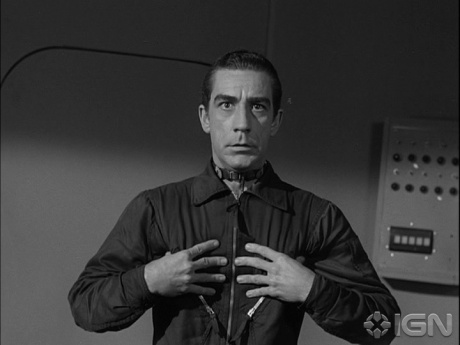
New Van quickly gives himself a heart beat for the examination. That satisfies the doctor briefly but later he, too, confronts New Van and with a flick of the wrist, he, too, goes down the Memory Hole to the void. What is the body count now? Ninety-two.
New Van blames the deaths on Dick, who then runs up and down the same empty corridor for ten minutes. Exercising while in spaces essential.
Meanwhile, New Van with a heart now hits on Wasp Woman, much to her surprise for she has only had eyes, many of them are needed, for little Dick. (She played Wasp Woman in another Corman extravaganza though in fact the insects were bees, but no one told her before her business card was printed.) Now with a heart New Van has become a weak-willed and lustful human. He divides himself again, and — for a brief moment, as the fraternity brothers tensed — it looked like New Van 1 was going to clobber New Van 2 for being such a cream puff.
But no, he splits so one of him can molest Wasp Woman, while the others stuffs Dick down the Memory Hole. Ah, but Dick brought along his cap gun and threaten New Van 2 (NV2 hereinafter) who laughs. ‘Your weapon cannot hurt me!’ (He had not read the script, it seems.) Now that NV2 has a heart, he is vulnerable. Bang! Bang! NV2 crumples at Dick’s size-five shoes, and in another empty room NV1 clutching for Wasp Woman also crumples. Whew! Code violation averted.
Quickly Dickie takes command, inserting new solar batteries in the satellite which then bursts through the Mendoza Line where the other nine satellites were destroyed. The satellite sails into space to infest it with the corruption of the Earth. The end.
Evidently the aliens on Line duty, perhaps thanks to budget cuts, did not have any more tricks to use. Or maybe they were in a meeting about KPIs.
Where the satellite is going no one bothers to mention. It just boldly goes….
Why these English-speaking aliens chose to inscribe that warning Roman Candle rocket in Latin has bothered the fraternity brothers since 1958. There is no explanation in the film, and in 1958 it was no more a global language than Swahili.
Much in evidence in the parking lots are 1958 Detroit gas guzzlers with tail fins and chrome. They go with the duck tail. We also like the recliner chairs for space flight and the black zip suits.
The cast includes actors who were stalwarts in Batman (Michael Fox was Inspector Basch) and Superman (Robert Shayne was Inspector Henderson). Both parenthetical inspectors were veterans of B movie Sy Fy. But Richard Devon as Van carries the picture with his dour monotone, until he gets a heart and there flickers emotion in his eyes and a twitch of the lips. About Wasp Woman and Dickie the less said the better.
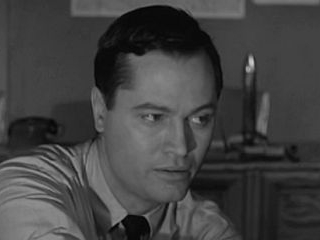 Roger Corman at the ground controls.
Roger Corman at the ground controls.
After seeing movies by Al Zimbalist, Ed Wood, and Lee Wilder, Corman seems like a genius.
‘The Enigmatic Mr. Deakin’ (2017) by Judith Brett
Alfred Deakin (1856–1919) was born in Melbourne and became the second Prime Minister of the nascent republic in 1903. He served two other terms in the big chair. Earlier he had been elected to the Victorian parliament in 1879 at age twenty-two and became a cabinet minister in 1883 at twenty-seven. He was active in the colonial discussions of federation from the earliest days and travelled to England as a representative of Victoria in the continuation of those negotiations with the Crown. During his parliamentary career he represented Ballarat, which by chance we recently visited.

His parents immigrated to Adelaide from Old Blighty in 1850. His father was a travelling salesman who left little behind in England but his mother was a homegirl from Wales and missed the Old Country for years and years. When gold popped out of the ground in central Victoria, already in Adelaide, they joined the thousands who trooped there. His father had the wit to realise that luck more than anything else determined success in gold mining and turned to supplying the needs of miners by offering transportation to and from Melbourne for passengers, goods, and gold. As a career traveller he knew quite a bit about that. The family lived in Melbourne not Ballarat.
Deakin’s entry into politics came young, as a member of the parliament of the colony of Victoria in his twenties. That became the rest of his life. While as a youth and even when a young parliamentary he was interested in spiritualism, that wore away for more conventional religion. Spiritualism of one sort of another was a fashion in the latter part of the Nineteenth Century, and interest was later renewed by the horror of World War I.
Deakin married a social equal but not an intellectual one, and his wife was relegated to the most conventional role as wife and mother. She did not welcome the meet-and-greet that went with politics, and over the years few people visited the Deakin home.
Deakin saw a great future for Australia, freed from the historic conflicts of Europe, and was an early champion of continental unity of some kind. Into the late Nineteenth Century the separate colonies charged each other tariffs, and competed for precedence in London. They also had conflict over the waterways like the Murray River. The first move was to create a single market. As logical as it seems, it disadvantaged some vested interests and created divisions that remained in new configurations.
There were the Protectionists who dominated Victoria and the Free Traders in the ascendancy in New South Wales. Both types were strongly oriented to Great Britain. There were further divisions within each camp. Deakin emerged as the leader of the Liberal Protectionists in Victoria against conservatives who wanted to privilege property owners by not taxing them. Conservatives opposed legal protections against child labor, working hours, pensions, and the like. By and large Deakin favoured such measures.
He rocketed to the top of the Victoria politics before he was thirty. He liked an audience and was a good speaker, moreover, he was a disciplined and hard worker at the desk. He cut an impressive figure, spoke well, and advocated unity. His father had run a stage coach line between Ballarat and Melbourne and Deakin went to that constituency. Though we saw nothing special about him when we visited Ballarat but then we did not go looking for it. When he rose to the top he was one of the few native born Australians in the parliament and he played that card.
As minister of the crown in Victoria he spent freely with all that gold in them thar hills. Train lines were built and the bridges, culverts, embankments, stations, and switches to make them work. Even today some of these lines are only now being laid to rest, as one of our guides complained in 2017. Deakin never did seem to grasp the relationship of income and expenditure. His affinity with the Labor Party may have stemmed from that.
There were inter-colonial conferences about trade and commerce, e.g., the Murray River. The fiftieth anniversary of Queen Victoria’s ascension was unprecedented, and it led to a massive gathering in London that was the seed from which CHOGM grew via the Empire and the Commonwealth. Deakin was a hit there and liked the whirl, social and political. His prominence there made him a hero in Melbourne when he returned to the adulation these days accorded only to athletes and airheads. He advocated Australian unity with urgency because of renewed interest in the Pacific by the European colonial powers France and Germany. The French penal colony in New Caledonia was next door to Queensland. German incursion into Northern New Guinea was disconcerting. However England had no interest in provoking a European war over some specks in the Pacific Ocean.
While he never lost his British identify, Deakin concluded that Australia must unify to protect itself. Later when Japan became a British ally and England seemed content to let expand its influence in the Pacific, once again Deakin saw a fissure between the interests of England and Australians.
But first came federation. There were many meetings of representatives of the colonial governments in Melbourne, in Sydney, and in Adelaide, all made difficult by transportation. Not all colonial governments sent representatives to each meeting. West Australia, then as now, played hard to get. Queensland was sometimes embroiled in its own soup, though its conflicts with France over sugarcane slavery would drive it into federation, but first its North-South division would have to be papered over. This latter rupture recurs between FNQ and Brisbane, as the second largest city of New South Wales, as we were once told in Cairns.
New Zealand participated in some talks but quit the scene. Tasmania was included in Victoria during the deliberations. The vast interior that is the Northern Territory had no agent.
Though federation was the logical step, the sitting colonial premiers could never quite be satisfied of the terms. It was a John Quick who proposed taking the final decision out of the hands of incumbents with a referendum. That broke the log jam. The fine-tuning led to the supermarket combination of political institutions taken from Westminster and Washington. The smaller states wanted protection from the larger states and that was the role of the Senate. Proportional representation and the preferential ballot evolved from the hostility and distrust of the anti-federationist who feared a large and remote government. This mutual distrust meant that a national capital was stymied in Deakin’s time. It could not be in any state capital for fear that it would be captured by its environment.
As federation came to prevail, the agreement, partly unspoken, was that the first prime minister should come from the Mother Colony from which the others came, namely New South Wales, and George Reid, the premier of NSW was a keen federationist. When the Colonial Office and the Foreign Office in London finally made peace with each other and Australian federation proceeded the plan was to create a whole, single colony and its first Governor-General would be John Hope, Earl of Hopetoun who would then appoint the first prime minister and cabinet, which in turn would superintend the first national election three months later from which a government with the consent of the governed would emerge.
Ah huh. Meanwhile an election was held in NSW. There were not yet coherent political parties by any manner or measure. Parliamentary groups were loose agglomerations around prominent individuals with little or no binding ideology or loyalty. Those in NSW who opposed federation did so because they advocated free trade and feared the dominance of gold-wealthy Victorian protectionists briefly united to undermine Reid.
Peter Lyne had became NSW premier. In these pages he is characterised as a local fixer with no wider horizon. If anything, he opposed federation, though such abstractions were of little interest to him. There were many hasty meetings and much telegraph traffic among supporters of federation to find another way that would avoid Lyne, who as the first Prime Minister might block federation.
The Governor-General felt duty-bound by the agreement to appoint the premier of NSW at the time as the first prime minister and so he asked Lyne to form a government. Deakin and other leading federations schemed to scupper the exercise. Deakin’s profile throughout Australia and in London was so high that a government without him would lack credibility. Yet he could not directly refuse because that would allow personal opponents and enemies of federation to paint him as selfish. Much squirming follows. In such situations Deakin prayed, wrote in his copious diary, schemed, threatened to leave politics, and such, as time passed. But as long as he did not commit to joining a Lyne cabinet, then others held out, too. He said neither yes nor no.
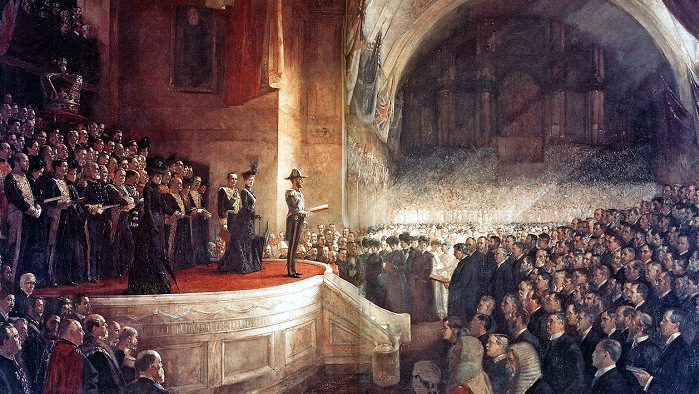 Federation
Federation
Lyne was under pressure to form a government quickly to organise elections by the three-month deadline and he just could not do that, and he was not greatly motivated to do so anyway, as he was more interested in pork-barreling in NSW, so he conceded defeat. That freed the Governor-General who turned to Edmund Barton of NSW, an arch federationists who collaborated with Deakin. Barton was not a premier but he was from NSW.
It is all confusing because Barton in NSW was a rarity, a Protectionist, but also a federationist. The election was held and Barton had enough support to continue in office, but support was personal and varied from issue to issue in the absence of parties. What galvanised the advent of parties was the entry of Labor representatives, led by Chris Watson, whose members foreswore individual initiative to comply with the line of the whole, i.e., the party line. Such cohesion and surrender of individual conscience repelled Deakin (and others) but he had good personal relations with Watson and they agreed on much.
While Deakin was ready always to legislate paternalist measures to enhance the status and lives of workers under the protectionist umbrella, he was uneasy with their ambition to take part in governmental directly. While they agreed on much legislation, Deakin could never quite accept Labor, though his governments depended on the votes of this bloc.
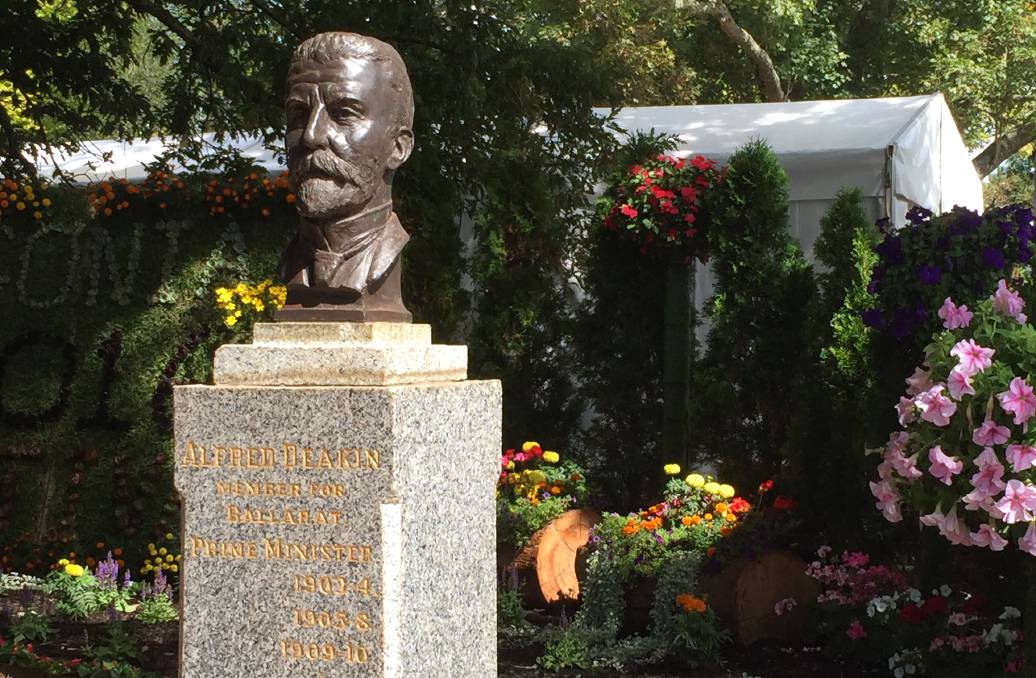 Deakin from the parade of Prime Ministers in the Ballarat Botanical Gardens.
Deakin from the parade of Prime Ministers in the Ballarat Botanical Gardens.
A succession of governments prior to World War I came and went, each based on personal followings and informal coalitions. While Deakin depended on and got support from Labor MPs he did not want a formal alliance with the ALP. It is a little like the Red and Blue governments in Canada of Arthur Meighen when Conservatives and Socialists combined against the Liberals of Ontario.
Deakin succeeded Barton in one such turn of the wheel, and then he stood aside when key legislation failed and there came the first Labor government with Chris Watson as prime minister for a few months. He was followed by Reid, the NSW federationists Free Trader, who had a turn, and then Deakin, then another Labor government of Andrew Fisher, and then again Deakin. The rise and fall of governments between 1901 and 1914 was largely done in parliament since election results in 1903, 1906, 1910, and 1913 did not produce disciplined majorities.
Through these years, Deakin saw himself as creating Australia, not serving the regional interest of Victoria, or any sectional class interest. Measures that did that he always opposed, including some put forth by Labor.
Hindsight allows a contemporary reader to see the emergence of a consensus behind protectionism with an accommodation from Labor. The Great Tariff Wall of Australia that resulted only wobbled in the 1980s, when another kind of Labor government saw it as a liability in the world of the time. Hindsight also shows the deep divide between the colonies become states, and the divisions within Queensland. These remain.
The Pacific environment fuelled unity and federation. When England proved disinclined to go to war over French, German, and Japanese influences in the region, Australians united. While West Australia was bellicose about its uniqueness and independence and Queenslanders concentrated on arguing with each other about whether it was to be one state or two, when a Japanese fleet set sail, they all rushed to embrace the Australian flag.
The arrangement with England that Deakin negotiated was for Australians to raise funds, through taxes, to pay a subvention for Royal Navy operations in Australian waters. Whether this arrangement was unique, I cannot say, but New Zealand must also have had an interest in such protection. I also wondered about the Canadian west.
Deakin’s career went on but his health failed, mainly his mental health, and he wisely chose to quit politics though there were no generous pension provisions at the time. His memory and mind were no longer as sharp as once, yet he still cut an imposing figure. When World War I came he was conspicuously silent largely because of his mental frailties, but since he looked fit, Faux News of the day criticised hm for a lack manly bloodthirstiness.
As his role decreased his wife Patty’s grew. She began to take part in ceremonial activities and then became a champion in war work, raising money, interceding for returned, wounded, and maimed soldiers, and Deakin’s role become one of supporting her. She and Deakin’s sister had been at odds throughout their lives. There had many tensions and eruptions, but in these latter years Patty came into her own.
Although the book opens with an intriguing parallel between Deakin and the infamous outlaw Ned Kelly, it has nothing to say about the Eureka Stockade of 1854 and any influence that might have had on Deakin. That silence is noteworthy given how strident the Museum of Australian Democracy at Eureka is that Australian democracy was founded in that event. Deakin seems to have missed this point. Elsewhere on the blog I have commented on this museum.
The book is impressive for its extensive research, considered insights into the man and the times, its careful judgements, and the ease with which the story unfolds. The author resists the temptation that afflicts so many writers to inject herself, her attitudes, her sensitivities, her opinions into the story from another world. Deakin is taken on his own terms and on the terms that prevailed in his time and place, and presented fully in a way that allows readers to draw their own conclusions. Once such an approach was the norm, not it is the exception.
Deakin always kept a diary, he sent and received letters by the score and kept just about every piece of paper it seems. This trove gives the biographer rich pickings which are judiciously employed, though after a time this reader grew weary of another meeting, another diary entry, another pondering of the imponderable.
 Judith Brett
Judith Brett
The cool distance taken by the author from the subject is in contrast say to the book I read about the women of the Eureka Stockade in which the author lectures the reader about what to think and why step-by-step. Whoever devised that term ‘public intellectual’ should be, per ‘Clockwork Orange,’ strapped down and made to watch and listen to batteries of such self-styled PIs babbling. Regrettably I have had to hear far too much from far too many of these clowns, while dreaming of such punishment. The hallmark of a Public Intellectual is a combination of opinion and volume, i.e., shouting nostrums unencumbered by facts, reason, or logic.
